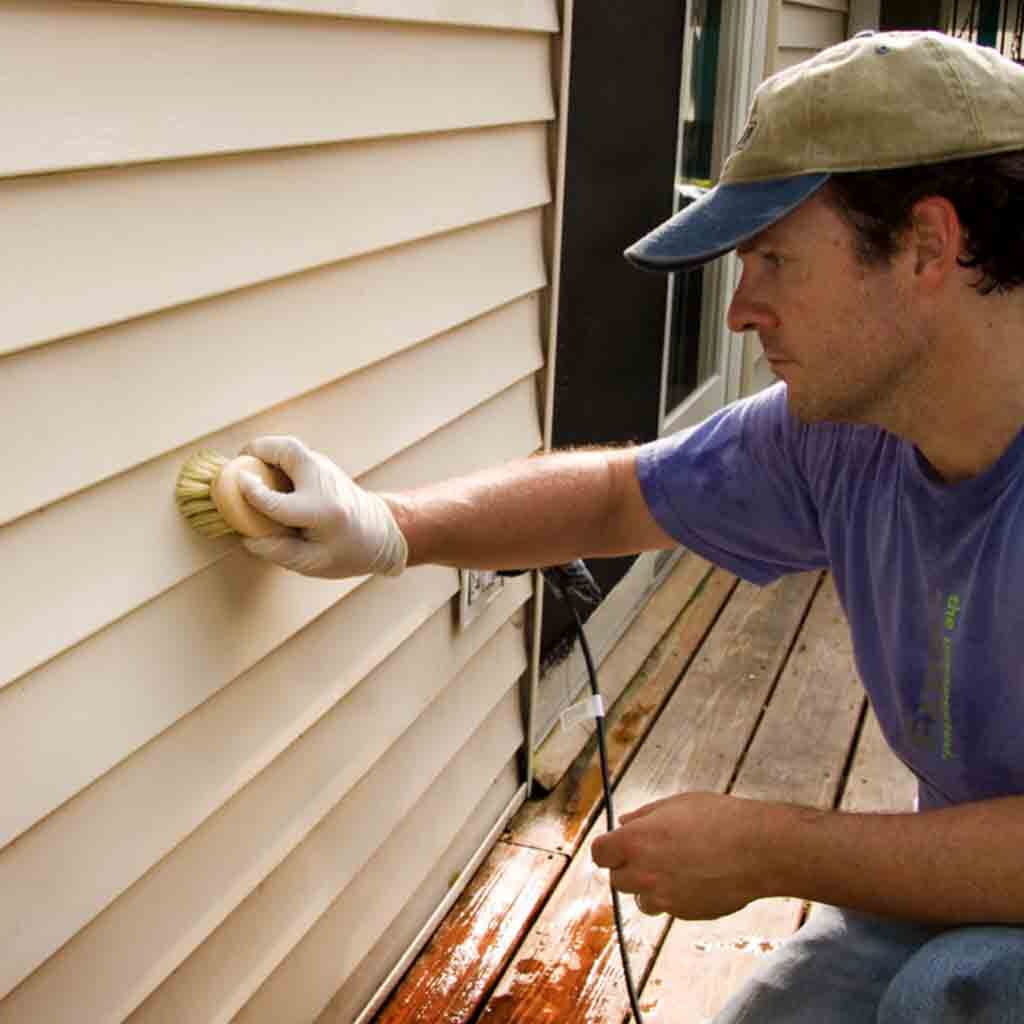Vinyl siding is a durable, versatile, and resilient building material, but it does require some routine cleaning.
The growing popularity of vinyl siding is indisputable. The U.S. Census Bureau statistics indicate that vinyl siding has been the leading exterior cladding in the U.S. since 1995. Its popularity shows no sign of waning; in 2011, 33% of new single-family homes sold in the U.S. were sided in the material.
Still, that doesn’t mean homeowners know how to clean vinyl siding— and keep it clean.
Because it is an exterior product, vinyl siding can accumulate dirt, grime, and stains due to pollen, bird and insect droppings, spider webs and rust.
In shady, moist areas, mold and mildew can grow. Vinyl is also vulnerable to discoloring effects from insecticides, herbicides, and fertilizers.


Vinyl siding’s finish may be marred by a number of commonly used household maintenance products, including caulking, driveway sealant, tar, motor oil and paint.
Luckily, cleaning vinyl siding is a fairly easy job, and there are a wide variety of products to help remove typical stains.
According to the Vinyl Siding Institute, the best way is to use a soft cloth or an ordinary long-handled, soft- bristle brush.
To prevent streaking, start at the bottom and work up towards the top of the house. When cleaning vinyl siding, remember to thoroughly rinse away any residue as you go.
Some Good Vinyl Sider Cleaner Solutions Include:
Cleaning vinyl siding is risky with a pressure washer, with most manufacturers advise against it, and other manufacturers recommend a limited amount of pressure washing. The main problem with using a pressure washer to clean your siding is that its very easy to drive water behind the siding. It becomes even more dangerous when using a pressure washer around openings like windows, doors, and plumbing connections.
Be careful to use only an approved and well tested cleaning agent. Avoid using any vinyl siding cleaners that contain organic solvents, undiluted chlorine bleach, liquid grease remover, nail polish remover, or furniture polish or cleaners. Any of these products might damage the vinyl siding’s surface.
Also, avoid using highly-abrasive scrubbers or steel wool; these, too, can cause damage when cleaning vinyl siding.
With just a little bit of time and effort, vinyl siding can be kept looking “like new” and will provide many years of trouble-free protection for your home.

© The Orange Guys 2021. All rights reserved.
The Orange Guys is division of Performance Property Services Inc.